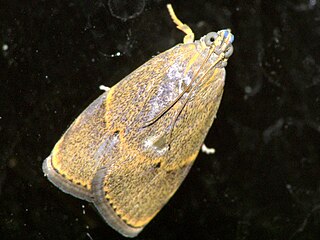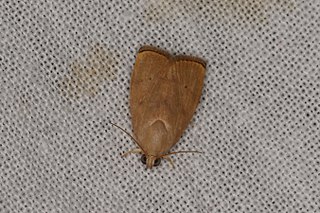
Imma mylias is a moth of the family Immidae. It is native to Sri Lanka, India, the Andaman Islands, the Philippines and Taiwan. It is an introduced species in Hawaii.
Idiophantis soreuta is a moth of the family Gelechiidae. It was described by Edward Meyrick in 1906. It is found in Sri Lanka.
Antaeotricha corvigera is a moth of the family Depressariidae first described by Edward Meyrick in 1915. It is found in Guyana and Peru.
Heteralcis palathodes is a moth in the family Lecithoceridae. It was described by Edward Meyrick in 1906. It is found in Sri Lanka.
Aeolanthes ampelurga is a moth in the family Depressariidae. It was described by Edward Meyrick in 1925. It is found in northern India (Kumaon).
Imma auxobathra is a moth in the family Immidae. It was described by Edward Meyrick in 1906. It is found on Borneo and in Nepal.
Imma chasmatica is a moth in the family Immidae. It was described by Edward Meyrick in 1906. It is found in the Indian states of Sikkim and Assam.
Imma chrysoplaca is a moth in the family Immidae. It was described by Edward Meyrick in 1906. It is found on New Guinea.
Imma crocozela is a moth in the family Immidae. It was described by Edward Meyrick in 1906. It is found on New Guinea.
Imma dioptrias is a moth in the family Immidae. It was described by Edward Meyrick in 1906. It is found on New Guinea.
Imma nephallactis is a moth in the family Immidae. It was described by Edward Meyrick in 1906. It is found in Venezuela.
Imma neurota is a moth in the family Immidae. It was described by Edward Meyrick in 1906. It is found on Borneo.
Imma porpanthes is a moth in the family Immidae. It was described by Edward Meyrick in 1906. It is found in Perak, Malaysia.
Imma thyriditis is a moth in the family Immidae. It was described by Edward Meyrick in 1906. It is found on the Solomon Islands.
Imma ancistrota is a moth in the family Immidae. It was described by Edward Meyrick in 1912. It is found on New Guinea.

Imma tetrascia is a moth in the family Immidae. It was described by Edward Meyrick in 1912. It is found in Australia, where it has been recorded from Queensland and Western Australia.
Imma grammarcha is a moth in the family Immidae. It was described by Edward Meyrick in 1905. It is found in Sri Lanka and possibly on Borneo.
Imma halonitis is a moth in the family Immidae. It was described by Edward Meyrick in 1920. It is found in Chennai, India.
Imma eriospila is a species of moth in the family Immidae. It was described by Edward Meyrick in 1922. It is found in Pará, Brazil.
Imma thianthes is a moth in the family Immidae. It was described by Edward Meyrick in 1927. It is found on New Ireland and New Hanover.

